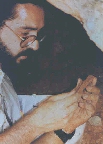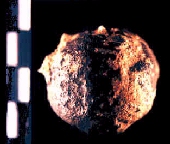
Plate 29: Sima de las Palomas - excavating in the upper cutting
Postcranial bones, mainly fragmentary and permitting very few measurements, help less than cranial or dental remains to relate hominid taxonomy to the geochronology or stratigraphy of the Sima de las Palomas breccia. Our upper cutting has undoubtedly Neanderthal teeth and although most human remains in it are unburnt some postcranial bones here show definite signs of burning, even though the soil here (Plate 29) is neither ashy nor visibly burnt (laboratory analyses are underway); is <50-60,000 years. Future resarch may confirm the still conjectural relationship between unstratified burnt "pre"-Neanderthal cranial fragments, especially from dirt and rubble piled up below lenses of burnt soil low down in the breccia column, and the lenses themselves, though their cranial morphology is incompatible with a time later than the last interglacial period, when the base of the column was deposited.

Plate 29: Sima de las Palomas - excavating in the upper cutting
Among human bones excavated in the upper cutting are a distal phalangeal bone, a child's humeral fragment of the head and neck with an unobliterated epiphyseal line, and a burnt fragment of humeral head (Plate 30 and 31).

Plate 30: Sima de las Palomas - upper cutting, humeral head and neck of juvenile. Scale in cm. (Photo M.J.Walker)

Plate 31: Sima de las Palomas - upper cutting, burnt humeral head. Scale in cm. (Photo M.J.Walker)
Unburnt bones from our upper cutting include an infant mandible, various phalangeal bones, a metacarpal or metatarsal fragment, carpal and tarsal fragments, a patella, sacral fragments, a baby's or foetal ulna, a symphyseal pubic fragment, another possibly pelvic fragment, and various long-bone fragments. Fragments of hominid long-bone shafts have come from sieved mine rubble; their narrow medullary cavities and thick cortical bone are distinctive. Two axis vertebrae (CG-8, CG-9) were found during clearance of rubble: one is burnt and adult, the other unburnt and adolescent or juvenile because the tip of its odontoid process had not yet fused to the body. Our upper cutting excavation gave both a vertebral neural arch fragment and a body of a child's (thoracic?) vertebra.
© Internet Archaeology
URL: http://intarch.ac.uk/journal/issue5/walker/4.2.3.html
Last updated: Wed Dec 23 1998